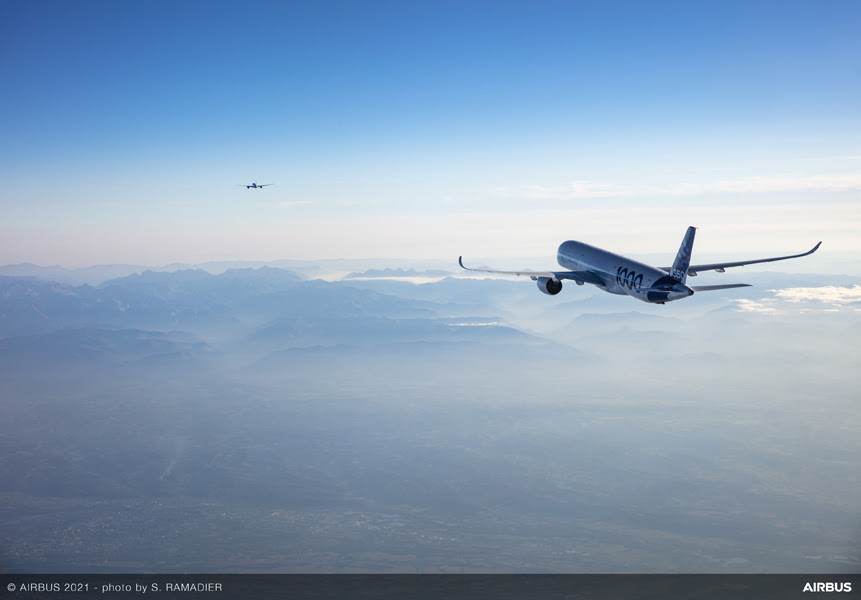On Tuesday, Airbus successfully demonstrated how long-haul formation flying can save fuel.
It’s no secret that when aviation manufacturers are looking for inspiration, they turn to nature. Whether imitating peregrine falcons for stealth bombers, or analysing wing structure for aircraft wings, our feathered friends can teach us a lot when it comes to flying. Now, Airbus has demonstrated how geese can provide us with another lesson in mastering the skies. Inspired by the distinctive ‘V’ formation so often seen in migrating geese, Airbus have successfully demonstrated how adopting a key element of this natural phenomenon could save on emissions by saving fuel. The principal makes sense on paper – geese and other birds use this formation to decrease wind resistance, as the lead bird takes the brunt of the wind, reducing its impact on the other birds. Makes sense, right? Actually, it makes so much sense I wonder why it hasn’t been trailed more before. With the aviation industry as a whole pushing for reduced emissions, and fuel conservation playing a massive part in this effort, the solution seems obvious in hindsight. So how did they do it? Well, firstly, they didn’t even have to form a full ‘V’. Instead, Airbus simply had two A350s fly in formation, with the lead aircraft tailed by a follower craft. This meant the following aeroplane saw a dramatic reduction in levels of wind resistance.
Airbus utilised a special flight control system, developed by the manufacturer, to position the following aircraft safely in the updraft generated by the wake of the lead craft. This allowed it to reduce its engine thrust, and therefore save a total of 5% on fuel consumption. Airbus’ chief technical officer, Sabine Klauke, stated how “the opportunity to get this deployed for passenger aircraft around the middle of the decade is very promising.” This would mean implementing a key fuel-saving measure as early as possible. Falling under the manufacturers “fello’fly” project, which seeks to mimic materials and structures from nature, the formation technique simply needs the support of aviation authorities to become certified. What’s more, the manufacturer claims this fairly substantial 5% reduction in fuel usage doesn’t compromise flight safety at all! Seems like a win-win for airlines, Airbus, and the planet to me. It may not be too long before we see aircraft ‘couples’ becoming a standard practice in the domestic aviation space.


0 Comments